Books by Daniel Pascoe
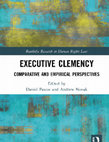
Routledge Research in Human Rights Law, 2020
Nearly every country in the world has a mechanism for executive clemency, which, though residual ... more Nearly every country in the world has a mechanism for executive clemency, which, though residual in most legal systems, serves as a vital due process safeguard and as an outlet for leniency in punishment. While the origins of clemency lie in the historical prerogative powers of once-absolute rulers, modern clemency laws and practices have evolved to be enormously varied. This volume brings comparative and empirical analysis to bear on executive clemency, building a sociological and political context around systematically-collected data on clemency laws, grants, and decision-making. Some jurisdictions have elaborate constitutional and legal structures for pardoning or commuting a sentence while virtually never doing so, while others have little formal process and yet grant clemency frequently. Using examples from Asia, Europe, Latin America, the Caribbean, and the USA, this comparative analysis of the law and the practice of clemency sheds light on a frequently misunderstood executive power.
This book builds on existing academic scholarship and expands the limited geographical scope of prior research, which has tended to focus on North America, the UK, and Australia. It relays the latest state of knowledge on the topic and employs case studies, doctrinal legal analysis, historical research, and statements by clemency decision-making authorities, in explaining why clemency varies so considerably across global legal and political systems. In addition, it includes contributions encompassing international law, transitional justice, and innocence and wrongful convictions, as well as on jurisdictions that are historically under-researched.
The book will be of value to practitioners, academics, and students interested in the fields of human rights, criminal law, comparative criminal justice, and international relations.

All five contemporary practitioners of the death penalty in the Association of Southeast Asian Na... more All five contemporary practitioners of the death penalty in the Association of Southeast Asian Nations (ASEAN)— Indonesia, Malaysia, Thailand, Singapore and Vietnam— have performed executions on a regular basis over the past few decades. NGO Amnesty International currently classifies each of these nations as death penalty 'retentionists'. However, notwithstanding a common willingness to execute, the number of death sentences passed by courts that are reduced to a term of imprisonment, or where the prisoner is released from custody altogether, through grants of clemency by the executive branch of government, varies remarkably among these neighbouring political allies.
Last Chance for Life: Clemency in Southeast Asian Death Penalty Cases explores the patterns which explain why some countries in the region award clemency far more often than do others in death penalty cases. Over the period under analysis from 1991 to 2016, the regional outliers were Thailand (with more than 95% of condemned prisoners receiving clemency after exhausting judicial appeals) and Singapore (with fewer than 1% of condemned prisoners receiving clemency). Malaysia, Indonesia and Vietnam fall at points in between these two extremes. What results is the first research monograph, anywhere in the world, to compare death penalty clemency across national borders using empirical methodology, the latter a systematic collection of clemency data in multiple jurisdictions using archival and 'elite' interview sources. Last Chance for Life is an authoritative resource for legal practitioners, criminal justice policy makers, scholars and activists throughout the ASEAN region and around the retentionist world.
Articles & Chapters by Daniel Pascoe

Punishment & Society, 2024
Literature on opposition to the death penalty typically characterizes abolition as inexorable and... more Literature on opposition to the death penalty typically characterizes abolition as inexorable and attributes its fulfillment to the age of human rights. Although most countries abolished capital punishment after the Universal Declaration of Human Rights in 1948, this article uses three comparative case studies to demonstrate abolition's entanglement with a broader range of political, legal, and cultural factors. Applying a historically grounded nonteleological approach, we offer three insights. First, civilizationist values drove abolitionism in countries in the "vanguard," such as Canada and England/ Wales, where human rights rationales were expressed well after abolition and as a mark of superiority. Second, death penalty abolition has often allied with decolonization and penal reform, but assertions of independence and sovereignty have periodically provoked reinstatement, as in Mexican and Philippine history, which underscores the fragility of abolition. Third, state-centric approaches to de jure and de facto abolition overlook the practice of extrajudicial and summary "rebel" executions in polities such as Myanmar and Mali, which lack a state monopoly on force. Further historical studies that do not presuppose a human rights explanation of abolition and that compare jurisdictions within as well as between the Global North and South will better grasp the death penalty’s complex history.
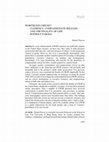
Northwestern University Law Review, 2024
Life without parole (LWOP) sentences are politically popular in the United States because, on the... more Life without parole (LWOP) sentences are politically popular in the United States because, on their face, they claim to hold prisoners incarcerated until they die, with zero prospect of release via the regularized channel of parole. However, this view is procedurally shortsighted. After parole there is generally another remedial option for lessening or abrogating punishment: executive clemency via pardons and commutations. Increasingly, U.S. legal jurisdictions also provide for the possibility of compassionate release for lifers, usually granted by a parole board.
On paper, pardon, commutation, and compassionate release are thus direct challenges to the claim that an LWOP sentence will inevitably and invariably lead to the prisoner’s death while incarcerated. Few previous studies, however, have examined the finality of LWOP empirically. In this Article, I present original empirical data on clemency covering the period 1990–2021 in order to investigate the relationship between LWOP sentences and the release mechanisms of executive clemency and compassionate release in both state and federal cases.
Ultimately, the results of this research reaffirm the finality of LWOP in the United States, despite the availability, on paper, of at least three potential release procedures. Only a handful of LWOP prisoners have received commutation or pardon from U.S. presidents, state governors, or pardons boards. Compassionate release has been granted almost as rarely. That said, some demographics tend to have benefited more than others. The findings presented within this Article are relevant not only to domestic clemency and end-of-life release policy but also to litigation dealing with a “right to hope” as a component of human dignity, and to the academic debate over LWOP as a global replacement for the death penalty and a form of “extreme” punishment of its own accord.
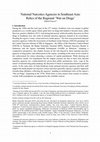
Drug Laws in Asia (Chan, Hor and Sato eds.), 2024
The four most prominent national narcotics agencies within the Association of Southeast Asian Nat... more The four most prominent national narcotics agencies within the Association of Southeast Asian Nations grouping are the Central Narcotics Bureau (CNB) in Singapore, the Office of the Narcotics Control Board (ONCB) in Thailand, the Badan Narkotika Nasional (BNN, National Narcotics Board) in Indonesia, and the Agensi Antidadah Kebangsaan (AADK) in Malaysia. Adopting a comparative perspective, this chapter focuses on the role played by these national narcotics agencies in drug policy and enforcement in the region, extending at the most severe extent to law enforcement for crimes attracting a sentence of capital punishment.
While drawing out comparative trends, two hypotheses that the chapter assesses are that a) these four national narcotics agencies are, counterintuitively given their public prominence, mere ‘cogs in the wheel’ of national drug policymaking, the direction of which is instead determined by political actors. At the same time, b) both Southeast Asian national narcotics agencies and their staff support the death penalty for narcotics crimes and more generally espouse a punitive approach towards drug offenders, reflecting the agencies’ standing as institutional relics of the region’s ‘War on Drugs’, beginning in the 1970s. While there is some nuance from country to country, overall, both assumptions are supported by the available sources.

Life Imprisonment in Asia (van Zyl Smit, Appleton and Giao eds), 2022
Despite the hardening local political context, life imprisonment laws and practices in Hong Kong ... more Despite the hardening local political context, life imprisonment laws and practices in Hong Kong remain relatively liberal by common law standards. This chapter first describes the legal position of life imprisonment in Hong Kong since the handover of sovereignty to the People’s Republic of China in 1997, by assessing life-eligible crimes, types of life sentences, constraints on judicial decision-making and possibilities for eventual release. The chapter then situates Hong Kong’s actual use of life imprisonment since 1997 within the worldwide practice of life imprisonment, particularly that of common law jurisdictions including England and Wales. Given the rarity of ‘de facto’ life sentences, the chapter’s analysis focuses on mandatory and discretionary formal life terms pronounced by the Hong Kong courts, and their consideration by the Long-term Sentences Review Board – Hong Kong’s answer to a parole board for life-sentenced prisoners. Finally, the chapter comments on the prospective impact on life imprisonment, if any, of the recent authoritarian turn brought to Hong Kong law and politics by the Beijing-drafted National Security Law (June 2020), plans for further Basic Law article 23 legislation, and the ongoing prosecutions of anti-government protesters after major social unrest between 2014 and 2020.
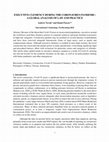
International Criminology, 2022
Because of the threat that Covid-19 poses to incarcerated populations, executives around the worl... more Because of the threat that Covid-19 poses to incarcerated populations, executives around the world have used their clemency powers to commute sentences and grant freedom to prisoners in high-risk categories. Coronavirus pardons may be justified on several theories of punishment and have been exercised alongside bureaucratic forms of legal mercy such as parole and compassionate release. Although executive clemency is residual in most legal systems, the novel coronavirus has reactivated the pardon power in many jurisdictions, overcoming significant legal and procedural barriers, albeit with exclusions for particular crimes and categories of offender. This article relays global trends in executive clemency granted as a result of Covid-19, drawing out relevant lessons for the academic literature on the topic, as well as for policymakers dealing with future pandemics and other emergencies.
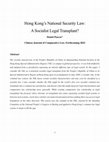
Chinese Journal of Comparative Law, 2022
The recently enacted Law of the People’s Republic of China on Safeguarding National Security in t... more The recently enacted Law of the People’s Republic of China on Safeguarding National Security in the Hong Kong Special Administrative Region (NSL) is unique in global perspective: it was both drafted by and adopted from a jurisdiction espousing an entirely different type of legal system. In this article, I consider the NSL as a potential socialist legal transplant from the People’s Republic of China to its Special Administrative Region of Hong Kong upon its promulgation in June 2020. I consider why, in the criminal law context, the NSL bears certain socialist characteristics and may even be classified as a socialist law. I also consider whether the NSL might be the world’s first ever socialist criminal law transplant into a common law jurisdiction, and discuss what this might mean for legal interpretation and comparative law scholarship more generally. While existing comparative law scholarship on legal transplants has focused, where relevant, on transplants into States espousing socialist legal systems or between such systems, rarely have scholars encountered and analysed laws making their way across legal boundaries in the other direction. This article uses the example of the NSL, enacted by the Standing Committee of the National People’s Congress in Beijing and applied to Hong Kong’s common law legal system, to begin to fill the gap.
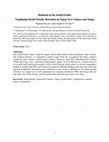
International Journal for Crime, Justice and Social Democracy (forthcoming), 2022
The South Pacific forms a cohesive region with broadly similar cultural attributes, legal systems... more The South Pacific forms a cohesive region with broadly similar cultural attributes, legal systems, and colonial histories. A comparative analysis starts from the assumption that these countries should have similar criminal justice policies. However, Papua New Guinea (PNG) and Tonga are retentionist death penalty outliers in the South Pacific, a region home to seven other fully abolitionist members of the United Nations. In this article we use the comparative method to explain why PNG and Tonga currently pursue a different death penalty trajectory than their regional neighbours. Eschewing the traditional social science explanations for death penalty retention, we suggest two novel explanations for ongoing retention in PNG and Tonga: the law and order crisis in the former, and the traditionally powerful monarchy in the latter.
Creativity and Innovation in Higher Education, 2021
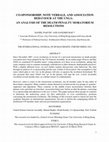
The International Journal of Human Rights, 2021
Since December 2007, seven resolutions in favour of a universal moratorium on death penalty execu... more Since December 2007, seven resolutions in favour of a universal moratorium on death penalty executions have been adopted by the UN General Assembly. In an earlier paper (Pascoe and Bae 2020) we examined UN member states' voting patterns over these seven resolutions, asking why some countries vote in a manner seemingly contradictory to their domestic death penalty practices. With a slightly different focus, we now further explore idiosyncratic state behaviour, this time through an analysis of co-sponsorship and the note verbale of dissociation. Our assumption is that states which plan to vote 'yes' in the plenary will also co-sponsor the resolution beforehand. We also presume that states which vote 'no' in the plenary will sign the note verbale invariably circulated several months later, as a further means of condemnation. However, when it comes to the moratorium resolutions, not all member states fit into either of these binary categories. Many countries situate themselves in between the two groups of 'genuine' supporters and opponents. These countries in the middle evince inconsistency between their plenary votes and what we term their 'association behaviour' before or after the plenary, consisting of co-sponsorship and adherence to the note verbale. This paper analyses these groups of countries to determine the underlying causes for their ambivalent, or even contradictory, positions concerning the moratorium resolutions. The findings of this research stand to enrich not only the academic literature on international organizations, but also to inform the campaigning efforts of abolitionist UN member states and non-governmental organizations.
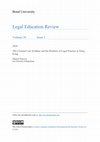
Legal Education Review, 2021
It is striking that criminal law syllabi throughout the common law world, including in Hong Kong,... more It is striking that criminal law syllabi throughout the common law world, including in Hong Kong, primarily focus on homicide, other violent offences, sexual offences, and theft-offences typically categorised as mala in se (evil in and of themselves), as opposed to mala prohibita (wrongful only due to statutory designation). Yet a predominance of mala in se offences is not what criminal law practice really looks like in Hong Kong, whether in the courtroom or in advising clients. This article utilises police data on crime prevalence in Hong Kong as well as a self-reporting survey of criminal law practitioners in an effort to more closely align the LLB/JD criminal law teaching syllabus with the present and future realities of legal practice in Hong Kong, at least in terms of the specific offences covered. The article concludes with a series of suggested amendments to the typical criminal law syllabus employed in the local jurisdiction.
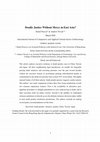
International Journal of Comparative and Applied Criminal Justice, 2020
This article explores executive clemency in death penalty cases in China, Taiwan and Japan. All t... more This article explores executive clemency in death penalty cases in China, Taiwan and Japan. All three neighbouring legal jurisdictions are notable for frequently passing death sentences and executing prisoners over the past several decades without the executive branch of government granting individualised pardon or commutation to any death row prisoner since at least 1975, if not earlier. This highly unusual feature of all three nations' death penalty practice suggests a policy puzzle. The authors' case study comparison of these three East Asian jurisdictions reveals two common explanatory features. First is the availability of alternative post-appellate procedures to mitigate punishment in cases undeserving of death, and to limit execution totals for policy reasons. Second is the inability of condemned clemency petitioners to directly access the ultimate clemency decision-maker, unlike in most death penalty retentionist jurisdictions. The authors conclude by making several policy recommendations on this basis.
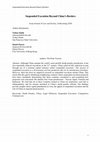
Asian Journal of Law and Society, 2021
Although China remains the world’s most prolific death penalty jurisdiction, it has also reported... more Although China remains the world’s most prolific death penalty jurisdiction, it has also reportedly reduced executions in the 21st century. China achieved this reduction in part through use of a nominal capital sentence called ‘suspended execution.’ The success of suspended execution as a diversionary tool has produced calls for its introduction elsewhere. However, there has been no empirical research on suspended execution outside China. This article fills this gap by identifying neighboring countries where suspended execution proposals have been considered, determining why these countries considered it, and examining how proposals were structured. We identify four Asian jurisdictions—Taiwan, Japan, Vietnam and Indonesia. We find that all of these countries looked to China for inspiration, each did so independently, and for reasons unrelated to China’s death penalty reforms. Our findings provide insights about capital punishment in Asia, the appeal of suspended execution and the role of China in regional penal practice
The International Journal of Human Rights, 2020
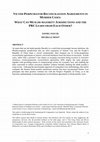
International & Comparative Law Quarterly, 2017
As states that use the death penalty liberally in a world that increasingly favours abolition, th... more As states that use the death penalty liberally in a world that increasingly favours abolition, the Muslim-majority jurisdictions that are strict exponents of Islamic Law and the People's Republic of China share a crucial commonality: their frequent use of victim-perpetrator reconciliation agreements to remove convicted murderers from the threat of execution. In both cases, rather than a prisoner's last chance at escaping execution being recourse to executive clemency, victim-perpetrator reconciliation agreements fulfil largely the same purpose, together with providing means of compensating victims for economic loss, and enabling the state concerned to reduce execution numbers without formally limiting the death penalty's scope in law. Utilizing the functionalist approach of comparative law methodology, this article compares the thirteen death penalty retentionist nations that have incorporated Islamic Law principles into their positive criminal law with the People's Republic of China, as to the functions underpinning victim-perpetrator reconciliation agreements in death penalty cases.
In May 2015, in an effort to foster peace in the restive Papua and West Papua Provinces, Indonesi... more In May 2015, in an effort to foster peace in the restive Papua and West Papua Provinces, Indonesian President Joko ‘Jokowi’ Widodo granted clemency to five political prisoners, releasing them from sentences ranging from 20 years to life. The president also stated that there would be ‘a follow-up granting clemency or amnesty to other [political prisoners] in other regions’ (Jakarta Post, 10 May 2015). However, with up to 50 political prisoners still incarcerated in prisons around Indonesia (mostly Papuan and Moluccan separatists), Jokowi’s selective release policy faces several legal and political obstacles. This article outlines the various options open to Jokowi in facilitating future political prisoner releases (including amnesty, clemency, remissions and conditional release), the advantages and disadvantages of each, before suggesting an acceptable way forward for all parties.
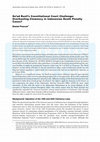
Since the formation of the modern Indonesian state in 1945, the Indonesian president has always p... more Since the formation of the modern Indonesian state in 1945, the Indonesian president has always possessed the constitutional power to grant clemency. This article provides an overview of the provisions and rationales for Indonesia’s clemency regulation, including the most recent clemency law passed in 2002, and its amending legislation in 2010. The article then outlines the Indonesian Constitutional Court’s decision in the Rusli decision (107/PUU-XII/2015 (15 June 2016)), which found the one year deadline for applying for clemency set out in the 2010 amending legislation to be unconstitutional. The Rusli decision has the potential to impact numerous prisoners on Indonesia’s 185-person death row, particularly those prisoners who had not yet applied for clemency by 15 June 2016.
However, to a significant extent, the Rusli decision’s future influence depends upon whether Indonesian courts will view it as operating prospectively or retrospectively. Even with a traditional interpretation favouring prospective operation only, different readings of the Rusli decision have the potential to either deny certain groups of prisoners the right to apply for clemency in the future, or else compromise the plans of the Indonesian Attorney General’s Office for more rapid executions. Consistent with the views of the Indonesian Ombudsman in its July 2017 findings on the execution of Nigerian national Humphrey Ejike, this article argues that the Rusli decision has significantly expanded the clemency franchise among current and future death row prisoners in Indonesia. Only through deliberate waiver, rather than through artificial timelines, can prisoners now be lawfully excluded from the right to apply for mercy from the president.

International Review of Victimology, 2020
This article discusses victim engagement with the executive clemency process from a normative per... more This article discusses victim engagement with the executive clemency process from a normative perspective. The authors’ aim is to explore the existing models of victim participation in clemency decision making in common law jurisdictions, in order to determine whether these possess any sound theoretical basis. The article brings together the academic literatures on victim participation and clemency functionality in order to ground the analysis. In brief, the authors' main finding is that victim involvement in clemency decision making can indeed be supported by the theoretical literature, albeit to a more limited extent than is currently practised in some common law jurisdictions. In light of the theoretical underpinnings of clemency in democratic societies and the literature on victim participation, the authors conclude by making several ‘best practice’ recommendations for future policy-making.










Uploads
Books by Daniel Pascoe
This book builds on existing academic scholarship and expands the limited geographical scope of prior research, which has tended to focus on North America, the UK, and Australia. It relays the latest state of knowledge on the topic and employs case studies, doctrinal legal analysis, historical research, and statements by clemency decision-making authorities, in explaining why clemency varies so considerably across global legal and political systems. In addition, it includes contributions encompassing international law, transitional justice, and innocence and wrongful convictions, as well as on jurisdictions that are historically under-researched.
The book will be of value to practitioners, academics, and students interested in the fields of human rights, criminal law, comparative criminal justice, and international relations.
Last Chance for Life: Clemency in Southeast Asian Death Penalty Cases explores the patterns which explain why some countries in the region award clemency far more often than do others in death penalty cases. Over the period under analysis from 1991 to 2016, the regional outliers were Thailand (with more than 95% of condemned prisoners receiving clemency after exhausting judicial appeals) and Singapore (with fewer than 1% of condemned prisoners receiving clemency). Malaysia, Indonesia and Vietnam fall at points in between these two extremes. What results is the first research monograph, anywhere in the world, to compare death penalty clemency across national borders using empirical methodology, the latter a systematic collection of clemency data in multiple jurisdictions using archival and 'elite' interview sources. Last Chance for Life is an authoritative resource for legal practitioners, criminal justice policy makers, scholars and activists throughout the ASEAN region and around the retentionist world.
Articles & Chapters by Daniel Pascoe
On paper, pardon, commutation, and compassionate release are thus direct challenges to the claim that an LWOP sentence will inevitably and invariably lead to the prisoner’s death while incarcerated. Few previous studies, however, have examined the finality of LWOP empirically. In this Article, I present original empirical data on clemency covering the period 1990–2021 in order to investigate the relationship between LWOP sentences and the release mechanisms of executive clemency and compassionate release in both state and federal cases.
Ultimately, the results of this research reaffirm the finality of LWOP in the United States, despite the availability, on paper, of at least three potential release procedures. Only a handful of LWOP prisoners have received commutation or pardon from U.S. presidents, state governors, or pardons boards. Compassionate release has been granted almost as rarely. That said, some demographics tend to have benefited more than others. The findings presented within this Article are relevant not only to domestic clemency and end-of-life release policy but also to litigation dealing with a “right to hope” as a component of human dignity, and to the academic debate over LWOP as a global replacement for the death penalty and a form of “extreme” punishment of its own accord.
While drawing out comparative trends, two hypotheses that the chapter assesses are that a) these four national narcotics agencies are, counterintuitively given their public prominence, mere ‘cogs in the wheel’ of national drug policymaking, the direction of which is instead determined by political actors. At the same time, b) both Southeast Asian national narcotics agencies and their staff support the death penalty for narcotics crimes and more generally espouse a punitive approach towards drug offenders, reflecting the agencies’ standing as institutional relics of the region’s ‘War on Drugs’, beginning in the 1970s. While there is some nuance from country to country, overall, both assumptions are supported by the available sources.
However, to a significant extent, the Rusli decision’s future influence depends upon whether Indonesian courts will view it as operating prospectively or retrospectively. Even with a traditional interpretation favouring prospective operation only, different readings of the Rusli decision have the potential to either deny certain groups of prisoners the right to apply for clemency in the future, or else compromise the plans of the Indonesian Attorney General’s Office for more rapid executions. Consistent with the views of the Indonesian Ombudsman in its July 2017 findings on the execution of Nigerian national Humphrey Ejike, this article argues that the Rusli decision has significantly expanded the clemency franchise among current and future death row prisoners in Indonesia. Only through deliberate waiver, rather than through artificial timelines, can prisoners now be lawfully excluded from the right to apply for mercy from the president.
This book builds on existing academic scholarship and expands the limited geographical scope of prior research, which has tended to focus on North America, the UK, and Australia. It relays the latest state of knowledge on the topic and employs case studies, doctrinal legal analysis, historical research, and statements by clemency decision-making authorities, in explaining why clemency varies so considerably across global legal and political systems. In addition, it includes contributions encompassing international law, transitional justice, and innocence and wrongful convictions, as well as on jurisdictions that are historically under-researched.
The book will be of value to practitioners, academics, and students interested in the fields of human rights, criminal law, comparative criminal justice, and international relations.
Last Chance for Life: Clemency in Southeast Asian Death Penalty Cases explores the patterns which explain why some countries in the region award clemency far more often than do others in death penalty cases. Over the period under analysis from 1991 to 2016, the regional outliers were Thailand (with more than 95% of condemned prisoners receiving clemency after exhausting judicial appeals) and Singapore (with fewer than 1% of condemned prisoners receiving clemency). Malaysia, Indonesia and Vietnam fall at points in between these two extremes. What results is the first research monograph, anywhere in the world, to compare death penalty clemency across national borders using empirical methodology, the latter a systematic collection of clemency data in multiple jurisdictions using archival and 'elite' interview sources. Last Chance for Life is an authoritative resource for legal practitioners, criminal justice policy makers, scholars and activists throughout the ASEAN region and around the retentionist world.
On paper, pardon, commutation, and compassionate release are thus direct challenges to the claim that an LWOP sentence will inevitably and invariably lead to the prisoner’s death while incarcerated. Few previous studies, however, have examined the finality of LWOP empirically. In this Article, I present original empirical data on clemency covering the period 1990–2021 in order to investigate the relationship between LWOP sentences and the release mechanisms of executive clemency and compassionate release in both state and federal cases.
Ultimately, the results of this research reaffirm the finality of LWOP in the United States, despite the availability, on paper, of at least three potential release procedures. Only a handful of LWOP prisoners have received commutation or pardon from U.S. presidents, state governors, or pardons boards. Compassionate release has been granted almost as rarely. That said, some demographics tend to have benefited more than others. The findings presented within this Article are relevant not only to domestic clemency and end-of-life release policy but also to litigation dealing with a “right to hope” as a component of human dignity, and to the academic debate over LWOP as a global replacement for the death penalty and a form of “extreme” punishment of its own accord.
While drawing out comparative trends, two hypotheses that the chapter assesses are that a) these four national narcotics agencies are, counterintuitively given their public prominence, mere ‘cogs in the wheel’ of national drug policymaking, the direction of which is instead determined by political actors. At the same time, b) both Southeast Asian national narcotics agencies and their staff support the death penalty for narcotics crimes and more generally espouse a punitive approach towards drug offenders, reflecting the agencies’ standing as institutional relics of the region’s ‘War on Drugs’, beginning in the 1970s. While there is some nuance from country to country, overall, both assumptions are supported by the available sources.
However, to a significant extent, the Rusli decision’s future influence depends upon whether Indonesian courts will view it as operating prospectively or retrospectively. Even with a traditional interpretation favouring prospective operation only, different readings of the Rusli decision have the potential to either deny certain groups of prisoners the right to apply for clemency in the future, or else compromise the plans of the Indonesian Attorney General’s Office for more rapid executions. Consistent with the views of the Indonesian Ombudsman in its July 2017 findings on the execution of Nigerian national Humphrey Ejike, this article argues that the Rusli decision has significantly expanded the clemency franchise among current and future death row prisoners in Indonesia. Only through deliberate waiver, rather than through artificial timelines, can prisoners now be lawfully excluded from the right to apply for mercy from the president.